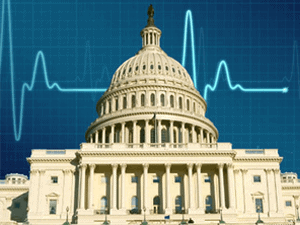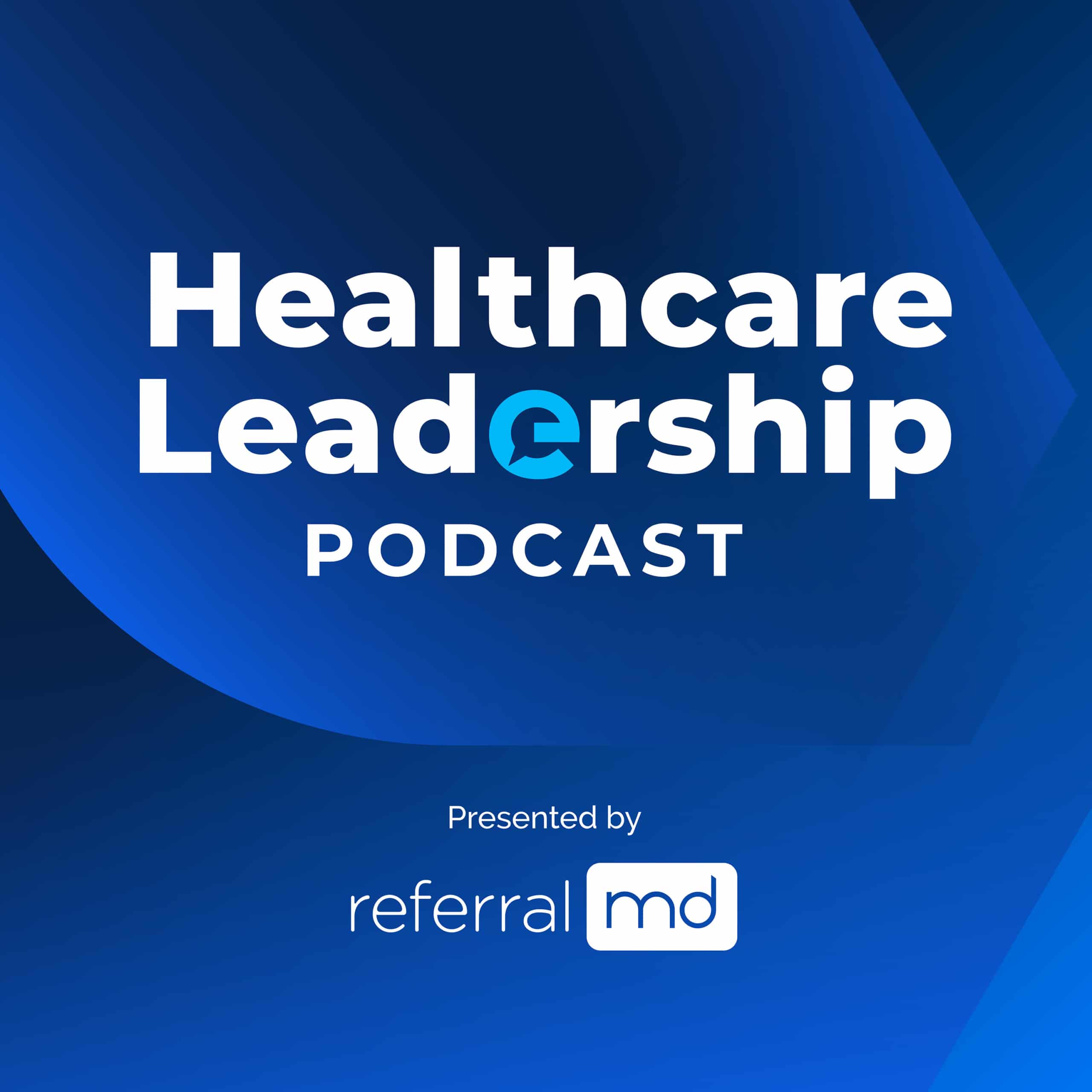 Introduction
Introduction
Today’s healthcare climate is one of uncertainty, with the longstanding bond between doctor and patient growing ever more tenuous as the nation reacts to fundamental changes within its healthcare structure.
Since March 2010, when President Obama signed into law the Patient Protection and Affordable Care Act as amended by the Health Care and Education Reconciliation Act[2] (collectively referred to as the Affordable Care Act or “ACA”), the federal government has continued to release information aimed at clarifying and expanding upon the original 2,700 pages of codified reform.
At its core, ACA seeks to prohibit health insurers from denying coverage or refusing claims based on pre-existing conditions, expand Medicaid eligibility, subsidizing insurance premiums, provide incentives for businesses to offer healthcare benefits, and increase support for medical research.
As the implementation of these new programs, partnerships, preventative care measures, competitions and grants steals headlines daily, ACA’s ramifications underscore the ways in which the Federal government has increased its presence in healthcare in an effort to ensure that the allocated trillion dollars in federal funding remains accountable. Arguments made by both critics and supporters of ACA have become all too familiar in the ongoing debates, with each side citing the nation’s growing economic crisis as a major factor in ACA’s future.
Meanwhile, both patients and providers are unsure how to respond to this bevy of changes as they wait to discover what impact ACA may have on their coverage and bottom line. To fuel this growing fire, both parties must remain in harm’s way while they endure the collateral damage that seems set to accompany such dramatic restructuring of our system’s foundations.
How Did We Get Here?
Thanks largely to the media’s continued focus on the changes to our healthcare’s structure since the passage of ACA, it is easy to forget the importance of history in understanding the nation’s present day system. For starters, it has grown exponentially, both in terms of coverage and cost. In 1960 approximately 5.2 percent of the nation’s $526 billion gross domestic product (“GDP”) went toward national healthcare expenditures (“NHE” or national healthcare expenditure accounts (“NHEA”)).[3]
The NHE calculates total annual spending for healthcare in the United States (goods and services), in addition to total administrative spending each year, as well as the net cost of private health insurance, among other things.[4] By 2009, that same number had escalated to 17.6 percent of a $14.1 trillion GDP.[5] NHE increased from $74.9 billion in 1970 to $2.5 trillion in 2009, or from $356 per capita to $8,086 per capita.6 Such a rate of growth points to fundamental changes within the structure of healthcare itself, which may explain the difference between the $3.5 billion budget for the United States Department of Health and Human Services (“HHS”) in 1962 and the estimated $1.2 trillion projected for 2016.[7]
Representing a fundamental component of federal healthcare spending for nearly fifty years is Medicare, the public health insurance program that has been both a source of political contention and a beacon of hope from which to gauge the changes in American healthcare as a whole since it first passed in 1965 as part of the Social Security Amendments. [8] Medicare had as its original focus individuals sixty-five years of age and older,[9] with a similar yet state-run program, Medicaid, addressing the medical needs of people with certain disabilities and low-income families.[10] And yet, at a cost of $10,075 per beneficiary in 2010, Medicare has over the years grown to represent the backbone for the entire nation’s healthcare system, which is a far cry from its humble origins and initial cost of $593 per beneficiary in 1967.11
Indeed, 2009 figures show that Medicare consumed $502 billion, or 20 percent of total NHE, creeping that much closer to the $801.2 billion (32 percent of total NHE) spent the same year on private health insurance. Medicare kept its respectable lead over the $373.9 billion (15 percent of total NHE) directed toward Medicaid and the $299.3 billion (12 percent of total NHE) from out-of-pocket spending.12
In 1967, for its 19.5 million enrollees, Medicare reimbursed hospital services (including inpatient care, skilled nursing facility services, home health agency services, and hospice services, (referred to today as Part A) the sum of $4.24 billion.13 For the 47.7 million Medicare enrollees in 2010, this figure increased to $176 billion.14 For physician services and other healthcare needs that eventually came to comprise what is known today as Part B, the Medicare program paid $1.27 billion in 1967 (for 17.9 million enrollees) and $154 billion by 2010 (for 44 million enrollees).15
Through the 1980s, physician compensation followed an upward trajectory more consistent with inflation than healthcare,16 even if the slope of this elevation was not as steep as the overall growth in Medicare payments. Between 1982 and 1989, the average annual income for physicians increased by 24 percent to $155,800, with surgeons enjoying a 33 percent increase to $220,500.17 The most recent information for a twelve-month period (2010) from the United States Department of Labor, Bureau of Labor Statistics estimated the mean annual wage at $189,480 for internists, $173,860 for family and general practitioners, and $225,390 for surgeons.18
The role of the modern hospital has also changed considerably over the last 20 years, as more and more facilities have had to struggle to keep their doors open. According to the latest data published by CMS, in 1990 there were an estimated 6,552 hospitals (including short stay, critical access, and non-short stay facilities); by 2010 that number had dropped to 6,169,19 a nearly six percent decrease in comparison to the 16 percent increase in Medicare enrollees during that same twenty year time period.20 The combined increase in utilization and decrease in number of hospitals is especially significant in California, where healthcare spending has grown exponentially over time. California’s population has continued to increase even as the number of hospitals statewide has decreased,21 resulting in close to a 10 percent reduction in the number of hospital beds in California between 2002 and 2009.22
Even against such odds, hospitals have remained a major point of access to American healthcare, in large part because of the availability of their emergency departments. The 1986 Emergency Medical Treatment and Active Labor Act (“EMTALA”)[23] requires hospitals to provide a specified level of care to anyone presenting for emergency medical treatment regardless of citizenship, legal status, or ability to pay, or risk the imposition of hefty fines or even loss of participation in federal healthcare programs. As a result, the great bulk of responsibility for America’s uninsured has fallen to the nation’s hospitals, who must now shoulder approximately 60 percent of uncompensated medical care.24
Such a mandate to provide treatment to the uninsured weighs heavily on facilities striving to stay afloat amid an ocean of often-conflicting regulations. In 2008 alone, uncompensated medical care in the United States approached an estimated $57 billion, of which nearly $43 billion was paid by federal, state, and local governments from funds earmarked for this very purpose through Medicare. This included disproportionate share hospital (“DSH”) payments, indirect medical education (“IME”) payments, and Medicaid (including DSH payments and supplemental provider payments, for example).25 Although the Federal Government typically foots close to half of this annual bill, its contribution equals only 2 percent of federal healthcare spending yearly.26
In addition to EMTALA’s influences, ACA contains certain mechanisms for CMS to evaluate both patient satisfaction and hospital quality measures. As a result, within the next few years hospitals may face a one percent reduction overall on Medicare payments under the Inpatient Prospective Payment System (“IPPS”), as these funds are now earmarked to cover performance bonuses. By 2015, hospitals that continue to show poor performance ratings will not only be excluded from this bonus pool, they will also face additional cuts in reimbursement.[27]
2012 proved to be an interesting year now that the United States Supreme Court has confirmed the Constitutionality of ACA 28 While interest in the Supreme Court’s landmark decision, as well as the Presidential elections in the United States, served to keep ACA in the limelight, it seems unlikely that any single action will put an end to the debate over healthcare reform.29 While speculating about the direction in which the majority will rule, it thus becomes increasingly important to pay particular attention to the dissenting opinion(s), as they may prove in the long run to be akin to a modern-day oracle concerning the future of reform.[30]
The Present Day Impact on Doctors and Hospitals
The proposed legislation creating the Medicare program initially sought to include an array of physician services as well as hospital care. Attempting to placate both sides of the partisan debate, legislators divided the Medicare program into a series of sections, each of which was to reign over a specific aspect of healthcare. The program’s cornerstone was “Part A,” which provided health insurance coverage for qualified individuals requiring hospitalization.[31]
As a concession to the demands of physician lobbying efforts and public fears, Congress then created “Part B,” a set of optional benefits addressing medical necessities such as doctor services, outpatient care, and home health maintenance.[32] Over the years, Congress has carefully defined the term “hospital” under its Medicare program[33], while at the same time closely guarding the rates at which hospitals are reimbursed under the program. Although Part B did provide limited coverage for physician and other similar services, it imposed no restrictions on what physicians could charge, thereby creating a fundamental rift between doctors and hospitals, each now having different incentives in the way they approached the delivery of healthcare.[34]
Ironically, almost 50 years after the fact this rift has begun to come together under certain provisions within ACA. Two years after Medicare was passed, it expanded the scope of coverage under Part B to include additional services such as durable medical equipment, podiatric care, and outpatient physical therapy.[35] The federal Government also extended Medicare eligibility to people under the age of 65 with certain long-term disabilities and others with chronic kidney disease.[36] The 1973 Health Maintenance Organization Act[37] created a partnership of sorts between the Federal Government and certain healthcare providers, again changing the dynamic between hospitals and physicians by extending medical oversight authority to non-clinicians.
Perhaps the most dramatic change to Medicare since its formation was the creation of a classification system designed to standardize patient care by devoting a set price to a given procedure. Known as the diagnosis-related group (“DRG”), this prospective payment system did away with reimbursing providers for the actual cost of their services, creating instead a predetermined rate per illness based on a patient’s diagnosis.[38] The introduction of the DRG system was in part responsible for an exodus of procedures that had traditionally been done in the hospital on an “inpatient” basis. Relying on advances in medical technology, many hospitals began to bridge the gap between Part A and Part B by working with physicians in outpatient facilities in an attempt to avoid whenever medically feasible the disparate reimbursement systems inherent in Parts A and B.[39]
Today’s healthcare structure favors a new dynamic, as ACA emphasizes performance as a means to save money and increase efficiency, rather than the cost-based initiatives that had traditionally been the hallmark of American health care.[40] As such, it marks a dramatic shift in government policy as it relates to both regulation and funding.[41] While performance measures in healthcare have historically focused on individual clinicians rather than systems, ACA legislation now encourages the formation of accountable care organizations (“ACO”s), a concept designed to overhaul the nation’s health care system by implementing structures that monitor the quality and efficiency of entire groups of medical practitioners in an effort to assess performance and create standards for compensation. This Hospital Value-Based Purchasing Program is another step toward shifting the reimbursement infrastructure from the cost of services to improvements in patient health and performance.[42]
Such federal encouragements toward bundling[43] and the effects of these newly formed ACOs [44] may soon rule the day, providing comprehensive incentives for physicians and hospitals to realign in the interest of healthcare sustainability. Providing further motivation for hospitals and physicians to join forces, the federal government has recently eased up on the traditionally strict healthcare regulatory framework. In an initial step, the Office of the Inspector General has clarified the limited implications of physician self-referral laws and federal anti-kickback statutes.[45] Likewise, the Federal Trade Commission has confirmed that entry into ACOs will not require a mandatory antitrust review, while at the same time creating an antitrust “safety zone” for ACOs approved by CMS.[46] Finally, the Internal Revenue Service has provided participation guidelines for charitable organizations without compromising any tax-exempt status.[47]
From the Patient’s Point of View
While the Federal Government has attempted to create a new system that will finally mend the rift that occurred in 1965, this does not necessarily mean that physicians and hospitals will elect to play in the same proverbial sandbox. What is perhaps more significant is that such new provisions within ACA do little to reassure patients that healthcare is headed in the right direction,[48] especially as the health insurance market has begun to spiral out of control well in advance of the 2014 effective date on certain restrictions.[49]
The relationship between health insurance and health care spending over the past fifty years illustrates another potential reason as to why patients have yet to fully embrace healthcare reform in its most recent incarnation. Although out-of-pocket expenses made up close to 50 percent of all national health expenditures in 1960, this same category plummeted to approximately 12 percent in 2009, due largely to the role that Medicare and Medicaid played in American healthcare.[50] While historically such influence tended to work in a patient’s best interest, the last five years have shown a disturbing upward trend in the amount of money individuals and families have been forced to spend on healthcare insurance.[51]
Further exacerbating the situation, in 2006 only 6 percent of covered workers in small companies (those consisting of 3-199 employees) chose to enroll in a high deductible plan of $2,000 or more for individual coverage although by 2011 that number had increased to 28 percent.[52] Large companies (those consisting of 300 or more employees) saw a modest increase in $2,000 or more high deductible plan enrollment from one percent in 2006 to five percent in 2011. Individuals enrolled in deductibles of $1,000 or more increased from 16percent in 2006 to 50 percent in 2011 for small companies, while large firms increased from 6 percent in 2006 to 22 percent in 2011.[53] And while the average percentage of premiums paid by employees for individual and family coverage remained relatively flat between 1999 and 2011 (holding between 26 percent and 30 percent for family coverage and between 14 percent and 19 percent for individual coverage),[54] the actual amounts to be paid out of pocket proved anything but stable. In 1999, the average premium for individual coverage was $2,196, but by 2011 that figure had increased to $5,429. Similarly, family coverage averaged $5,791 in 1999 but jumped to $15,073 by 2011.[55]
Reevaluating the Doctor/Patient Relationship
Healthcare has seen its fair share of shifts in strategic alliances over the years, as its structure has been forced to adapt to fluctuations in the marketplace as well as repeated recalibrations of government regulations, including those pertaining to issues of reimbursement.[56] As the amount of money our nation spends on healthcare continues to increase at alarming rates, patients, doctors, and hospitals will most likely have greater struggles than before. This inherent disconnect between the changes in our healthcare system and the satisfaction of patients and providers leaves much to be desired and considered.57
To most Americans in the modern age, healthcare is considered a right rather than a privilege, particularly when it comes to emergency medical care. To date there is no prerequisite granting entitlement to its benefits save that of U.S. citizenship, and even the highest level of neglect will not bar any claim to services. But if health care remains a right that one cannot forfeit through abuse, who should be made responsible for picking up the tab? In the past, the business of healthcare has often operated outside the parameters of fiscal consideration, and it is this lack of financial control that has now come to threaten health care’s very existence. At its core, the new system proposed by reform seeks to address these inequities, recognizing that its survival relies on its sustainability.
For healthcare reform to succeed, individuals must come to accept the harsh truth that the present path on which this country is headed may ultimately lead to the abolition of unrestrained entitlement to care. Since the establishment of parameters that may one day lead to individual loss of this basic right is not presently up for consideration, now is the perfect opportunity for the creation of an alliance that recognizes not only our right to comprehensive care, but also our responsibility to ourselves and the system in which we trust. Mutual compromise is our only hope for the resurrection of the doctor/patient relationship.
This article, written by Craig B. Garner and David A. McCabe, was first first published in the Journal Health, Culture and Society, Vol. 3, No. 1, on November 16, 2012.[/fusion_builder_column][/fusion_builder_row][/fusion_builder_container]











